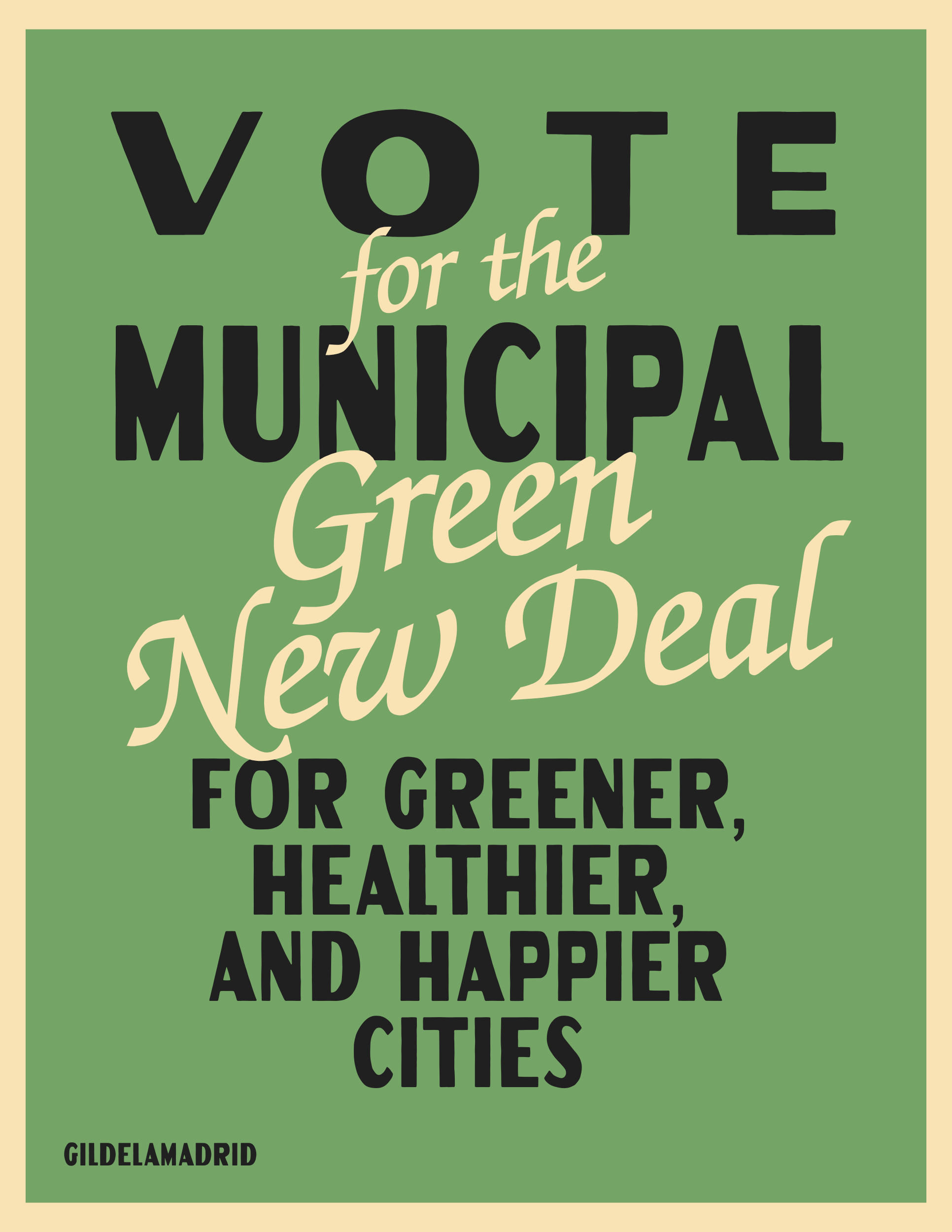Municipal Green New Deals are leading the way

If we are pragmatic, we must recognize that, under the Trump administration, the Green New Deal is not federally viable. However hostile to Green New Deal politics, the Trump administration’s efforts to undo climate policies can be countered if progressives play their cards right.
Within the halls of the White House, the current chief executive has been working overtime to deconstruct Biden’s environmental and climate legacy. Section 7 of Trump’s January 2025 executive order, Unleashing American Energy, orders the termination of the Green New Deal, ending various grants, loans, contracts, and jobs established via Biden’s Inflation Reduction Act. With this, the President has asserted that he ended the Green New Deal, with many Republicans dubbing it as the “Green New Scam.” Under Trump, the EPA announced it ended the Green New Deal.
The invocation of the GND label when discussing IRA policies and programs that Trump has frozen or cancelled, including climate and environmental reimbursements, is not entirely accurate. While the Inflation Reduction Act has been conflated with the Green New Deal, such as with Trump’s rhetorical conduct, scientists contend that after careful consideration, the “IRA is not truly a Green [New] Deal.” In fact, Biden’s bill relied heavily on tax breaks to stimulate private sector green growth, while the progressive GND vision is state-focused.

With the attacks on the program mounting, with some even suggesting that the GND isn’t being rolled back fast enough, the future of the GND looks dim–until we transition our focus away from the walls of Congress and from the mouths of federal legislators. Instead, when we shift our gaze onto the leaders of our cities and towns, we can then begin to appreciate a completely different, and arguably more successful, level of the progressive climate movement: the municipal Green New Deal.
When then-Councilor Michelle Wu introduced the Boston Green New Deal and Just Recovery to the Boston City Council in August 2020, her city was experiencing the disruptive COVID-19 pandemic, providing a critical opportunity for making systemic shifts and reconfigurations. Her project had big ambitions. The plan included bold but vital proposals such as 100% renewable energy sources by 2030, and city-wide carbon-neutrality by 2040.
The next year, Wu was running for Mayor on a Green New Deal platform, won, and spearheaded a full-fledged Boston Green New Deal program including electric city buses, a clean energy transition, food justice, housing justice, and funding for local public schools. Since then, the Boston GND has operated as a currently successful experiment in municipal climate programs.
It’s not just Boston. Former Los Angeles Mayor Eric Garcetti established the LA Green New Deal in 2019 with the three Es: environment, economy, and equity. Garcetti focused on green job creation, clean energy consumption, and climate mitigation efforts. In a region routinely defined by anthropogenic climate change-induced fires and droughts, the GND was and remains popular.
The Green New Deal of Ithaca, New York, seeks to achieve carbon-neutrality by 2030. In the plan was the goal for 100% clean energy by 2025. Unfortunately, millions in budget funding have been frozen by the Trump administration, but Ithaca leaders contend that the program continues to move forward.
Green New Deals in our local governments can focus on issues such as electrified public transportation and mobility justice broadly, clean energy consumption and production, green urban planning, green job creation, and projects that foster community engagement and climate resilience.
What this movement suggests is that the GND is actively developing from the bottom up. AOC’s non-binding resolution may be floating around in the federal Congress, but the bulk of the action is taking place in our own backyards.
While the federal government remains an obstacle to bold sustainability and climate policy, the fight doesn’t end there. Boston, Los Angeles, and Ithaca are just three examples of how municipal politics can deliver climate and economic justice. Why do nothing while waiting for political winds to change in Washington, when we could be doing so much through our local governments? It’s time to shift our focus from DC to our cities and towns, and vote for the municipal Green New Deal.






